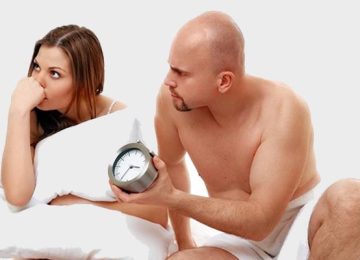Today, I will talk Sin Recato about how sexual desire is directly related to the menstrual cycle. This is not a biology class, but it is important that not only women, but their partners as well, understand what changes occur month by month.
The menstrual cycle: it is a period of approximately 28 days in which the woman experiences different changes, especially in the uterus and ovaries, by the action of female sex hormones.
These changes have a reason: to prepare the body for a possible pregnancy, from the reproductive stage with the first menstruation until menopause (end of menstruation). The cycle varies in each woman, between 23 and 35 days, as some cycles are short or long.
Sex hormones are responsible for regulating the menstrual cycle and are produced in the pituitary gland (brain) FSH and LH and in the ovaries (estrogen and progesterone). FSH (follicle stimulating hormone): its function is to stimulate the ovary to develop the primordial follicles, which contain the eggs. LH: luteinizing hormone, which is responsible for ovulation once the follicle, which contains the egg, has fully matured.
Estrogens: hormones produced by the ovary as the follicles develop. Their function is to regulate the menstrual cycle and the woman’s sexual development.
Progesterone: produced by the ovary after ovulation. Its function is to thicken the endometrium so that the embryo can implant and pregnancy can occur.
Preovulatory phase: also known as the follicular or proliferative phase. This is when the ovarian follicles grow from menstruation to ovulation.
Since puberty, a woman has an ovarian reserve of about 500 thousand primordial follicles in her ovaries. These are in a dormant state, waiting to develop in each menstrual cycle.
Estrogens, which are produced in the proliferative phase, contribute to the appearance of a more watery and elastic cervical mucus, which favors the entry of sperm. Estrogens also help to thicken the endometrium.
Ovulatory phase: in this phase, around day 14 of the menstrual cycle, the pituitary gland elevates LH levels, which triggers ovulation. At this stage the Graafian follicle ruptures and the mature egg it contains is released into the fallopian tube.
A woman’s fertile days are the closest ones to ovulation; that is, they are located towards the middle of the menstrual cycle. During this period, there is a greater probability of pregnancy if unprotected sexual intercourse takes place.
Generally, in each menstruation, there is a single mature egg that is expelled in one of the fallopian tubes. Sometimes ovulation of two follicles occurs, which is probably a twin pregnancy. The egg remains in the tube waiting to be fertilized. If it does not occur within 24 hours of ovulation, the egg ages and cannot be fertilized.
Post-ovulatory phase: also known as the secretory or luteal phase, it begins after ovulation and lasts until the end of menstruation, i.e. until there is menstrual bleeding. The ruptured follicle transforms into a yellowish body called the ‘yellow body’ or ‘corpus luteum’. Its function is to produce estrogen and progesterone, two important hormones for the endometrium.
Progesterone is responsible for modifying the cervical mucus so that it becomes impenetrable to sperm.
Ischemic phase: when the released egg is not fertilized by the sperm, the corpus luteum disappears. Consequently, estrogen and progesterone production decreases and the ischemic phase of the menstrual cycle begins.
This decrease in female sex hormones causes the endometrium to desquamate and is eliminated through the vagina, triggering a new menstrual cycle. The hormones will increase again and follicular proliferation will begin.
The question Sin Recato is: What happens to sexual desire in each of these stages?
In the premenstrual phase, some women experience premenstrual syndrome which is an up and down of emotions, sensitivity and irritability. One way to release this “rage for no apparent reason” is to give free rein to pleasure by enjoying without inhibitions.
In the menstrual phase, most women are very sensitive and irritable, and it is perfectly natural because there are many discomforts such as: abdominal swelling, cramps, breast pain, joint pain, headache and even some suffer from migraine and diarrhea. It is not a pleasant time to have sex.
Female sex hormones are at their physical and emotional limits. However, sexual intimacy at this stage can connect you with your partner, this intimacy is not related to intercourse, remember that you can make love ‘without taking off your clothes’.
In the preovulatory phase, after menstruation ends, women are more energetic, extroverted and uninhibited. At this stage, sexual desire is filled with a lot of passion and surrender, so enjoy this stage with your partner and give free rein to your imagination.
During ovulation, the woman’s body is preparing to gestate, and that is why they feel delicate, maternal and more focused on the couple’s relationship. The sexual desire of this phase is expressed on an emotional level and with a lot of physical pleasure. This stage is the perfect combination of romance and sensuality.
This cycle will repeat in women for approximately 40 years, not counting pregnancy interruptions, until it finally ends with menopause. So you, gentlemen, take note of these phases and be loving and understanding with your wife.
Traducción del español: Catalina Oviedo Brugés
















